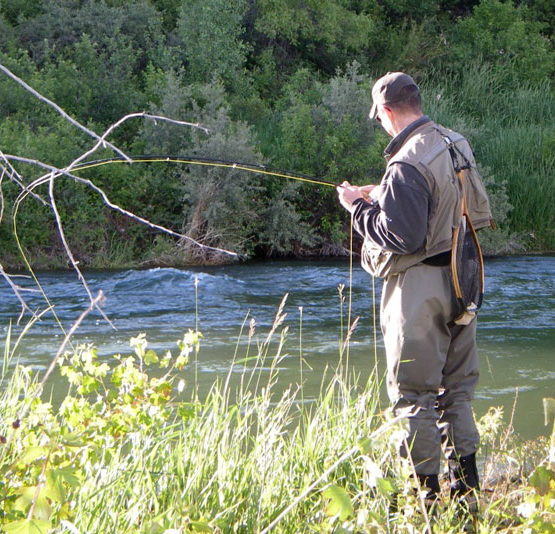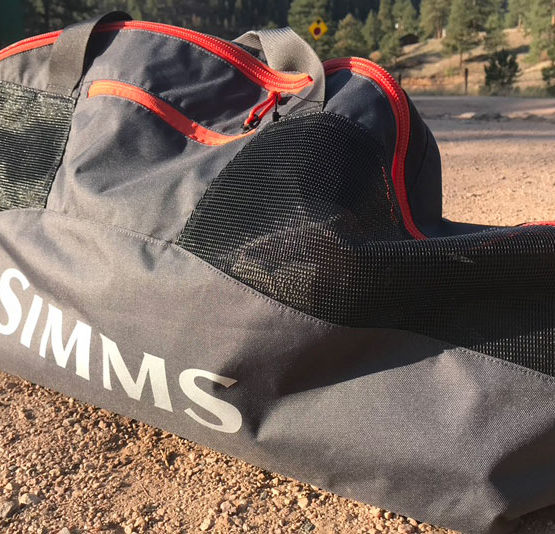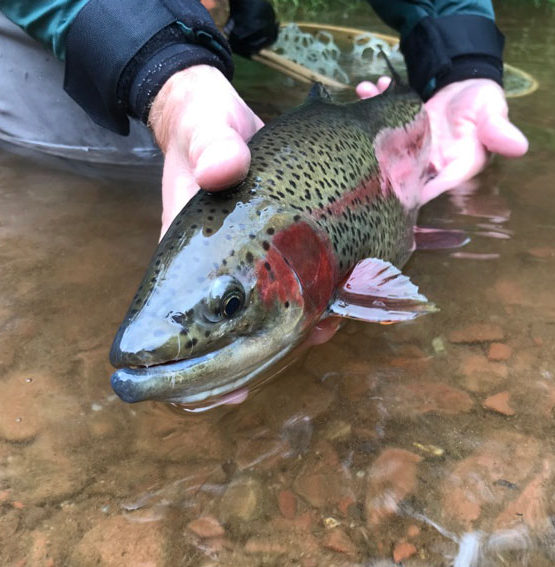In fly fishing, few things will wreck a day on the water more than brittle tippet. I can’t tell you how many times I have lost a nice-sized trout (and a rig of freshly-tied flies), all because I placed my trust in tippet that was past its prime. So, to prevent you from experiencing this same heartbreak, I am going to get right to the point and answer the question, how long does tippet last?
Tippet has a shelf life of 1 to 2 years. Though, this timeline varies based upon a few different factors. For example, exposure to moisture, heat and sunlight can dramatically decrease the life of tippet. Meanwhile, storing your tippet in a cool, dry place can extend its shelf life to 2.5 years.
That said, pushing the limit on your tippet’s shelf life is not something we recommend. I mean are you really willing to risk the loss of a beautiful trout and a rig of expensive flies, all because you didn’t want to spend $14.95 on a new spool of tippet every other summer?
The 2-year mark should really be the end of the line (no pun intended) for any spool of tippet. But, if you feel like you are struggling to get more than one season out of your tippet before it gets too brittle, we have some advice for you.
Here are 5 simple tips to make your tippet last longer.
Related Content:
- How To Read A River: 9 Tips To Catch More Trout
- When Is Fly Fishing Season?
- Can You Fly Fish Anywhere?
- 9 Killer Nymphing Tips For Beginners
- Do You Need Tippet For Fly Fishing?
1. Reduce Exposure To Sunlight
The more days you spend on the water, the more exposure your tippet will get to sunlight. And, while there is no such thing as too many days on the water, too much sunlight can seriously decrease the life of your tippet.
So, how are you supposed to combat this?
Easy. When you go fishing, only bring the tippet you are going to need. In other words, if you are going to be fishing a small mountain stream filled with leader-shy brook trout, leave your 3X tippet at home. Or, if you are heading to fish the Bighorn, where the current is strong and the fish fight hard, leave your 5X back at the cabin. You won’t need it.
2. Avoid Heat
The only thing worse than too much sunlight for your tippet, is heat.
Now, this might seem a little strange because summer is high-time for fly fishing, but the less you expose your tippet to heat, the longer it will last.
The point is, if you are fly fishing on a hot summer day, don’t leave your extra spools of tippet in your car. And in particular, don’t leave them on the dash, or in the bed of your pickup truck.
I’ve learned this the hard way.
Over the course of time, I have left more spools of tippet in the bed of my truck than I am willing to share. And, on multiple occasions, I have left a brand new spool baking on my dash for a whole day of fishing. Not good.
Additionally, for the days you aren’t on the water, be sure to store your tippet in a cool environment.
For instance, I like to keep my tippet in a small, plastic storage bin in the basement. That way, it won’t be exposed to sunlight or heat.
I have even heard of fly fishermen that store their tippet in the refrigerator. I have never tried this, but for those of you that live in a warmer climate, this might be beneficial.
3. Beware Of Moisture
In addition to heat and sunlight, moisture will wreak havoc on the life of your tippet.
So, when you are on the water, be sure to keep your tippet from getting too wet.
For those of you that wear a vest, and keep your tippet on a spool-holder, this won’t be too hard. Just don’t wade in past your belly button. But if you are more of a sling pack, or hip pack kind of fly fisherman, be sure you don’t wade deep enough to soak your spools (tippet spools, that is).
And whenever you find yourself taking off your vest or pack, be sure to hang it, or set it in a dry place.
Your tippet will last significantly longer if you can keep it dry, so watch out for moisture.
4. Store It Properly
I mentioned this earlier, but when I’m not on the water, I keep my fly fishing gear in a plastic storage container. And within that container, I like to keep my tippet spools in a plastic bag.
This keeps them from being exposed to any elements that might cause it to become brittle.
Now, I live in Colorado, where it is dry and cold in the winter, so this might be overkill, but if you live in a humid environment, this could seriously lengthen the life of your tippet.
I know, this might seem extensive, but when you have 10 different spools of tippet that cost fifteen bucks a pop, making your tippet last as long as possible is just a good financial move.
5. Buy It From A Popular Retailer
This might be the most unique tip in this article, but if you want your tippet to last a long time, you should buy it from a well-known retailer. Whether that means a popular fly shop in your area, or Amazon, you want to make sure they sell their inventory fast enough to keep things fresh.
Think about it, if you buy tippet from a less-popular retailer that doesn’t sell inventory quickly, you might be buying old tippet. Now, I’m no mathematician, but if tippet has a shelf life of 2 years, and you buy a spool of tippet that’s been sitting on a shelf for 12 months, you will be lucky to get a year of life out of it.
Now, just to be clear, I am not telling you to abandon your local fly shops. I’m just saying that when it comes to tippet, if you want it to last as long as possible, buy it from a retailer with fresh inventory.
Testing Your Tippet
There’s only one way to ensure your tippet doesn’t get brittle, and that’s to use it all before it goes bad. In other words, go fly fishing a lot!
Though, even if you fish every day, there will come a point in time when one of your spools of tippet gets old. But, whether it’s that spool of 7X you never ended up using, or that extra spool of 3X you didn’t actually need, fishing with old tippet is a recipe for heartbreak.
So, before you tie an expensive rig of flies onto brittle tippet, I recommend you do “the knot test”.
It’s pretty simple. Just unspool approximately 12 inches of the tippet in question, tie an overhand knot (or wind knot as it’s often called in fly fishing) in the middle of it, and pull on either end. Depending on the strength of tippet in question, you will have to use your best judgement in deciding if the tippet is still viable.
If the tippet holds up to the knot test, you can be sure it will hold up to a fish. However, if you pull on either end, and the tippet breaks a little too easily for your liking, it’s time to say goodbye to that spool.
Final Thoughts
Tippet can last anywhere from a single season, to two years, or more.
If you want to get the most out of it, all you have to do is:
- Reduce exposure to sunlight
- Avoid heat
- Beware of moisture
- Store it properly
- Buy it from a popular retailer
Oh, and if you are ever wondering whether an old spool of tippet is worthy of a freshly-tied rig, a hard-fighting trout, just put it through the knot test.










